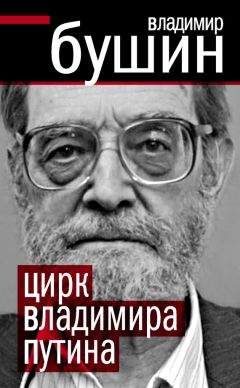Steven Dubner - Freakonomics
In the late 1960s, several states began to allow abortion under extreme circumstances: rape, incest, or danger to the mother. By 1970 five states had made abortion entirely legal and broadly available: New York, California, Washington, Alaska, and Hawaii. On January 22, 1973, legalized abortion was suddenly extended to the entire country with the U.S. Supreme Court’s ruling in Roe v. Wade. The majority opinion, written by Justice Harry Blackmun, spoke specifically to the would-be mother’s predicament:
The detriment that the State would impose upon the pregnant woman by denying this choice altogether is apparent…. Maternity, or additional offspring, may force upon the woman a distressful life and future. Psychological harm may be imminent. Mental and physical health may be taxed by child care. There is also the distress, for all concerned, associated with the unwanted child, and there is the problem of bringing a child into a family already unable, psychologically and otherwise, to care for it.
The Supreme Court gave voice to what the mothers in Romania and Scandinavia—and elsewhere—had long known: when a woman does not want to have a child, she usually has good reason. She may be unmarried or in a bad marriage. She may consider herself too poor to raise a child. She may think her life is too unstable or unhappy, or she may think that her drinking or drug use will damage the baby’s health. She may believe that she is too young or hasn’t yet received enough education. She may want a child badly but in a few years, not now. For any of a hundred reasons, she may feel that she cannot provide a home environment that is conducive to raising a healthy and productive child.
In the first year after Roe v. Wade, some 750,000 women had abortions in the United States (representing one abortion for every 4 live births). By 1980 the number of abortions reached 1.6 million (one for every 2.25 live births), where it leveled off. In a country of 225 million people, 1.6 million abortions per year—
one for every 140 Americans—may not have seemed so dramatic. In the first year after Nicolae Ceau?escu’s death, when abortion was reinstated in Romania, there was one abortion for every twenty-two Romanians. But still: 1.6 million American women a year who got pregnant were suddenly not having those babies.
Before Roe v. Wade, it was predominantly the daughters of middle-or upper-class families who could arrange and afford a safe illegal abortion. Now, instead of an illegal procedure that might cost $500, any woman could easily obtain an abortion, often for less than $100.
What sort of woman was most likely to take advantage of Roev. Wade? Very often she was unmarried or in her teens or poor, and sometimes all three. What sort of future might her child have had? One study has shown that the typical child who went unborn in the earliest years of legalized abortion would have been 50 percent more likely than average to live in poverty; he would have also been 60 percent more likely to grow up with just one parent. These two factors—
childhood poverty and a single-parent household—are among the strongest predictors that a child will have a criminal future. Growing up in a single-parent home roughly doubles a child’s propensity to commit crime. So does having a teenage mother. Another study has shown that low maternal education is the single most powerful factor leading to criminality.
In other words, the very factors that drove millions of American women to have an abortion also seemed to predict that their children, had they been born, would have led unhappy and possibly criminal lives.
To be sure, the legalization of abortion in the United States had myriad consequences. Infanticide fell dramatically. So did shotgun marriages, as well as the number of babies put up for adoption (which has led to the boom in the adoption of foreign babies). Conceptions rose by nearly 30 percent, but births actually fell by 6 percent, indicating that many women were using abortion as a method of birth control, a crude and drastic sort of insurance policy.
Perhaps the most dramatic effect of legalized abortion, however, and one that would take years to reveal itself, was its impact on crime. In the early 1990s, just as the first cohort of children born after Roev. Wade was hitting its late teen years—the years during which young men enter their criminal prime—the rate of crime began to fall. What this cohort was missing, of course, were the children who stood the greatest chance of becoming criminals. And the crime rate continued to fall as an entire generation came of age minus the children whose mothers had not wanted to bring a child into the world. Legalized abortion led to less unwantedness; unwantedness leads to high crime; legalized abortion, therefore, led to less crime.
This theory is bound to provoke a variety of reactions, ranging from disbelief to revulsion, and a variety of objections, ranging from the quotidian to the moral.
The likeliest first objection is the most straightforward one: is the theory true?
Perhaps abortion and crime are merely correlated and not causal.
It may be more comforting to believe what the newspapers say, that the drop in crime was due to brilliant policing and clever gun control and a surging economy. We have evolved with a tendency to link causality to things we can touch or feel, not to some distant or difficult phenomenon. We believe especially in near-term causes: a snake bites your friend, he screams with pain, and he dies.
The snakebite, you conclude, must have killed him. Most of the time, such a reckoning is correct. But when it comes to cause and effect, there is often a trap in such open-and-shut thinking. We smirk now when we think of ancient cultures that embraced faulty causes—the warriors who believed, for instance, that it was their raping of a virgin that brought them victory on the battlefield. But we too embrace faulty causes, usually at the urging of an expert proclaiming a truth in which he has a vested interest.
How, then, can we tell if the abortion-crime link is a case of causality rather than simply correlation?
One way to test the effect of abortion on crime would be to measure crime data in the five states where abortion was made legal before the Supreme Court extended abortion rights to the rest of the country. In New York, California, Washington, Alaska, and Hawaii, a woman had been able to obtain a legal abortion for at least two years before Roe v. Wade. And indeed, those early-legalizing states saw crime begin to fall earlier than the other forty-five states and the District of Columbia. Between 1988 and 1994, violent crime in the early-legalizing states fell 13 percent compared to the other states; between 1994 and 1997, their murder rates fell 23 percent more than those of the other states.
But what if those early legalizers simply got lucky? What else might we look for in the data to establish an abortion-crime link?
One factor to look for would be a correlation between each state’s abortion rate and its crime rate. Sure enough, the states with the highest abortion rates in the 1970s experienced the greatest crime drops in the 1990s, while states with low abortion rates experienced smaller crime drops. (This correlation exists even when controlling for a variety of factors that influence crime: a state’s level of incarceration, number of police, and its economic situation.) Since 1985, states with high abortion rates have experienced a roughly 30 percent drop in crime relative to low-abortion states. (New York City had high abortion rates and lay within an early-legalizing state, a pair of facts that further dampen the claim that innovative policing caused the crime drop.) Moreover, there was no link between a given state’s abortion rate and its crime rate before the late 1980s—when the first cohort affected by legalized abortion was reaching its criminal prime—
which is yet another indication that Roe v. Wade was indeed the event that tipped the crime scale.
There are even more correlations, positive and negative, that shore up the abortion-crime link. In states with high abortion rates, the entire decline in crime was among the post-Roe cohort as opposed to older criminals. Also, studies of Australia and Canada have since established a similar link between legalized abortion and crime. And the post-Roe cohort was not only missing thousands of young male criminals but also thousands of single, teenage mothers—for many of the aborted baby girls would have been the children most likely to replicate their own mothers’ tendencies.
To discover that abortion was one of the greatest crime-lowering factors in American history is, needless to say, jarring. It feels less Darwinian than Swiftian; it calls to mind a long ago dart attributed to G. K. Chesterton: when there aren’t enough hats to go around, the problem isn’t solved by lopping off some heads.
The crime drop was, in the language of economists, an “unintended benefit” of legalized abortion. But one need not oppose abortion on moral or religious grounds to feel shaken by the notion of a private sadness being converted into a public good.
Indeed, there are plenty of people who consider abortion itself to be a violent crime. One legal scholar called legalized abortion worse than either slavery (since it routinely involves death) or the Holocaust (since the number of post-Roe abortions in the United States, roughly thirty-seven million as of 2004, outnumber the six million Jews killed in Europe). Whether or not one feels so strongly about abortion, it remains a singularly charged issue. Anthony V.
Bouza, a former top police official in both the Bronx and Minneapolis, discovered this when he ran for Minnesota governor in 1994. A few years earlier, Bouza had written a book in which he called abortion “arguably the only effective crime-prevention device adopted in this nation since the late 1960s.” When Bouza’s opinion was publicized just before the election, he fell sharply in the polls. And then he lost.
However a person feels about abortion, a question is likely to come to mind: what are we to make of the trade-off of more abortion for less crime? Is it even possible to put a number on such a complicated transaction?
As it happens, economists have a curious habit of affixing numbers to complicated transactions. Consider the effort to save the northern spotted owl from extinction. One economic study found that in order to protect roughly five thousand owls, the opportunity costs—that is, the income surrendered by the logging industry and others—would be $46 billion, or just over $9 million per owl. After the Exxon Valdez oil spill in 1989, another study estimated the amount that the typical American household would be willing to pay to avoid another such disaster: $31. An economist can affix a value even to a particular body part.
Consider the schedule that the state of Connecticut uses to compensate for work-related injuries.
LOST OR DAMAGED BODY PART
COMPENSATED WEEKS OF PAY
Finger (first)
36
Finger (second)
29
Finger (third)
21
Finger (fourth)
17
Thumb (master hand)
63
Thumb (other hand)
54
Hand (master)
168
Hand (other)
155
Arm (master)
208
Arm (other)
194
Toe (great)
28
Toe (any other)
9
Foot 125
Nose 35
Eye 157
Kidney 117
Liver 347
Pancreas 416
Heart 520
Mammary 35
Ovary 35
Testis 35
Penis 35–104
Vagina 35–104
Now, for the sake of argument, let’s ask an outrageous question: what is the relative value between a fetus and a newborn? If faced with the Solomonic task of sacrificing the life of one newborn for an indeterminate number of fetuses, what number might you choose? This is nothing but a thought exercise—
obviously there is no right answer—but it may help clarify the impact of abortion on crime.
For a person who is either resolutely pro-life or resolutely pro-choice, this is a simple calculation. The first, believing that life begins at conception, would likely consider the value of a newborn versus the value of a fetus to be 1:1. The second person, believing that a woman’s right to an abortion trumps any other factor, would likely argue that no number of fetuses can equal even one newborn.
But let’s consider a third person. (If you identify strongly with either person number one or person number two, the following exercise might strike you as offensive, and you may want to skip this paragraph and the next.) This third person does not believe that a fetus is the 1:1 equivalent of a newborn, yet neither does he believe that a fetus has no relative value. Let’s say that he is forced, for the sake of argument, to affix a relative value, and he decides that 1 newborn is worth 100 fetuses.
There are roughly 1.5 million abortions in the United States every year. For a person who believes that 1 newborn is worth 100 fetuses, those 1.5 million abortions would translate—dividing 1.5 million by 100—into the equivalent of a loss of 15,000 human lives. Fifteen thousand lives: that happens to be about the same number of people who die in homicides in the United States every year.
And it is far more than the number of homicides eliminated each year due to legalized abortion. So even for someone who considers a fetus to be worth only one one-hundredth of a human being, the trade-off between higher abortion and lower crime is, by an economist’s reckoning, terribly inefficient.
What the link between abortion and crime does say is this: when the government gives a woman the opportunity to make her own decision about abortion, she generally does a good job of figuring out if she is in a position to raise the baby well. If she decides she can’t, she often chooses the abortion.
But once a woman decides she will have her baby, a pressing question arises: what are parents supposed to do once a child is born?
Levitt found that the support at the University of Chicago went beyond the scholarly. The year after he was hired, his wife gave birth to their first child, Andrew. One day, just after Andrew turned a year old, he came down with a slight fever. The doctor diagnosed an ear infection. When he started vomiting the next morning, his parents took him to the hospital. By the following day he was dead of pneumococcal meningitis.
Amidst the shock and grief, Levitt had an undergraduate class that needed teaching. It was Gary Becker—a Nobel laureate nearing his seventieth birthday—
who sat in for him. Another colleague, D. Gale Johnson, sent a condolence card that so moved Levitt that he can still cite it from memory.
Levitt and Johnson, an agricultural economist in his eighties, began talking regularly. Levitt learned that Johnson’s daughter was one of the first Americans to adopt a daughter from China. Soon the Levitts began proceedings to do the same, a girl they named Amanda. In addition to Amanda, they have since had a daughter, now three, and a son, nearly one year old. But Andrew’s death has played on, in various ways. The Levitts have become close friends with the family of the little girl to whom they donated Andrew’s liver. (They also donated his heart, but that baby died.) And, not surprisingly for a scholar who pursues real-life subjects, the death also informed Levitt’s work.



